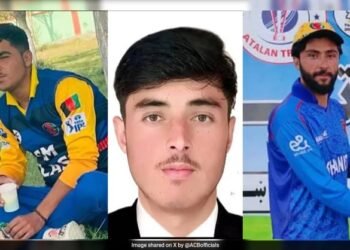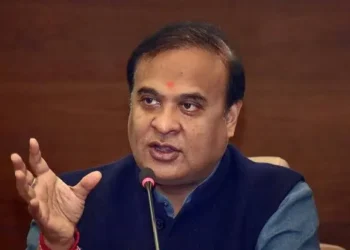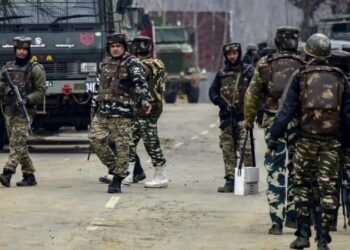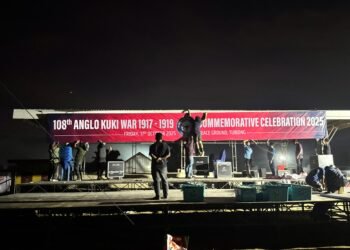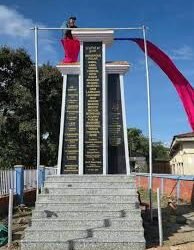The group said Indian troops later sealed the area, even as it praised its fighters for their “bravery and discipline” during the pre-dawn assault. A separate ULFA-I strike team reportedly attacked a 19 Grenadiers unit in Assam’s Tinsukia district, marking renewed coordination between rebel outfits.
BY PC Bureau
October 17: The NSCN/GPRN (Yung Aung faction) has claimed responsibility for a pre-dawn assault on a 4 Assam Rifles check post at Hahman village, near Manmao in Changlang district of Arunachal Pradesh, on October 16.
The release said Indian forces immediately cordoned off the area after the attack to conceal their losses, saying this has prevented independent verification of casualties. It alleged that, in recent months, Indian agencies have repeatedly sought opportunities to provoke, target and undermine the NSCN/GPRN, inflicting what the group called “irreparable harm” on the Naga national movement.
“Regardless of these actions, NSCN/GPRN remains resolute in its mission to defend our land and people,” the statement said, adding that the group would continue conducting “tactical strikes” until Indian troops are completely withdrawn from Naga areas.
The statement warned that the Naga Army is ready to engage Indian forces and their infrastructure at any time and place. “We will strike patrols, cantonments, outposts, camps and bunkers; our aim is to sow fear and uncertainty among enemy ranks,” it said.
Claiming the recent operation was a success, the release asserted that the attack inflicted heavy casualties on the “occupational Indian armed forces.” It also paid tribute to the fighters involved, saying the Naga Army tactical unit had shown “the highest standards of duty and bravery.”
Separately, the NSCN/GPRN said a ULFA-I strike team attacked the 19 Grenadiers at Kakopathar in Tinsukia district, Assam, and congratulated its ULFA-I “comrades-in-arms” for what it called a “decisive strike” and a strong signal to enemy forces.
The NSCN (Yung Aung), led by Yung Aung—nephew of late Naga rebel leader S.S. Khaplang—is a breakaway faction of the NSCN-K (Khaplang) group. Headquartered in the Myanmar border region, the faction opposes the 2015 ceasefire between NSCN (K) and the Indian government, calling instead for “sovereignty and complete withdrawal” of Indian forces from Naga territories spread across Nagaland, Arunachal Pradesh, Manipur, and parts of Assam.
The group is considered active along the Indo-Myanmar border, particularly in Arunachal’s Changlang, Tirap, and Longding districts, areas known for insurgent movements and overlapping militant networks involving ULFA (Independent), NDFB (Saoraigwra), and other northeast outfits.
READ: ‘Shameless Liar’: Congress Tears into Himanta for Lying on Rahul’s visit
READ: Manipur: Kuki Liberation Army urges 65+ Leaders to Step Aside
Joint Strikes with ULFA-I
The NSCN-YA statement said a strike team from the United Liberation Front of Asom (Independent) [ULFA-I] launched a coordinated attack around 12:30 AM on October 16 on a 19 Grenadiers unit at Kakopathar in Assam’s Tinsukia district. The statement described it as a “decisive strike” and part of what it termed the “joint revolutionary struggle” between the two insurgent outfits.
Both groups—ULFA-I led by Paresh Baruah and NSCN-YA led by Yung Aung—are part of a loose militant alliance operating under the banner of the “United Liberation Front of Western South East Asia” (ULFWSEA), which aims to expel Indian security forces from what they call “occupied territories.”
Call for Continued Armed Resistance
The NSCN-YA accused Indian security agencies of conducting targeted operations against its cadres and sympathizers in recent months. It vowed to continue “tactical strikes” until Indian troops withdraw from Naga areas and reiterated its commitment to the armed movement.
“The Naga Army will continue its sacred duty to defend Naga sovereignty. Our tactical units will respond decisively to every act of Indian aggression,” the statement declared. The group also praised its fighters for “courage, discipline, and sacrifice” during the Changlang operation.
Security agencies have not yet issued an official statement confirming the attack or casualties. However, intelligence sources have previously warned of increased coordination between northeast insurgent groups along the Indo-Myanmar border following intensified counter-insurgency operations in recent months.



